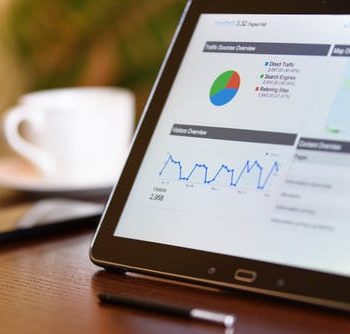What’s a Marketing and Sales Funnel?
Customers go through a process before they buy. Sometimes this involves a sales person and it almost certainly involves online research. Companies performing best at sales and marketing understand these processes or “marketing and sales funnels” very well, and nurture their prospects along the way to get leads and close more sales. These are the steps people take as they move towards becoming your customer.
Sales funnels go by different names. They are also known as the “customer journey” or “sales process.” Whatever you call them, these processes are critical to optimizing sales for your company. The secrets to improving sales and marketing results are often found in your sales and marketing funnels.
Digital Marketing Funnels
Digital marketing strategies now require the creation of very specific digital marketing funnels. The digital marketing funnel is comprised of the steps taken by prospective customers online before they make a purchase. It may include multiple points of contact, researching content in various online channels, using a variety of devices and more. These “touch points” make up the digital marketing nurturing process leading prospects towards becoming customers.
Understanding digital marketing funnels and modifying them to meet the needs of prospective customers results in higher lead conversion rates and increased sales.
However, many companies don’t know where to start and have made no attempt to put a digital marketing funnel in place!
Let’s take a closer look at how to optimize your digital marketing funnel to drive leads and sales.
Why don’t more companies create digital marketing funnels?
The short answer is many companies do not have the expertise on their team to get this work done. The expertise needed to develop digital marketing funnels is a new skill, not taught in school, and only learned by experience on the job and by having an open mind.
The Internet has changed marketing and it continues to evolve. New trends and tactics emerge on a regular basis and it’s hard for sales and marketing professionals to keep up! It’s changing marketing and sales processes on a daily basis and only companies with the right talent will be able to spot this trend, learn from it, and adapt it to their organization’s marketing efforts.
Many sales and marketing professionals are missing out on this hot trend.
The goal of this article is to provide guidance, direction, and is the first step towards implementing a digital marketing funnel at your company.
Two Types of Funnels
Many people confuse sales processes with digital marketing funnels. There are two kinds of funnels; a sales funnel and a digital marketing funnel. They often go by different names and are easily confused with one another, however they are very different.
Let’s look at how the two funnels are different.
The Sales Funnel
The sales funnel is the relationship a prospective customer has with your sales team, from their first communication, to closing the sale and follow-up, to a prospering ongoing relationship. The sales funnel is heavy on relationships, trust, and interactions between people.
Although the sales funnel is very important, the Internet has changed how it works. The sales funnel relies much more on the prospect’s online research and highly targeted presentations from the sales team. In the past, people would need to be qualified by a salesperson armed with probing questions to uncover needs. Now the sales prospect has done their homework and the salesperson must customize their presentation to meet very specific requests.
In some cases the prospect will know more than the sales rep because of their online research!
Sales funnels should have milestones and a process for keeping in touch. The keys to reaching milestones in the sales funnel are built on trust and mutual understanding.
The Internet has changed how marketers nurture the early part of the sales relationship with customers. These early stages happen prior to making contact with a salesperson. This is where the digital marketing funnel comes into the picture.
The magic happens when the two funnels work together to generate leads and grow sales!
The Digital Marketing Funnel
The digital marketing funnel is used to nurture prospects through their online research and generate qualified leads for the sales team. In the past, sales was more about finding prospects to become sales leads, now marketing is about helping prospects find your company and beach a sales lead.
Many marketers don’t realize how this works and the impact they can have on lead generation by creating opportunities for customers to interact with your company anonymously online, before they are ready to talk with a sales rep.
The digital sales funnel is the path prospective customers take online from their first experience of your brand, products, or services through to purchase. It often continues even after the sales process has started.
Let’s take a look at the steps needed to create digital marketing funnels.
Step One: Digital Marketing Channels and Content

Assuming you already have a solid marketing strategy, excellent content and professional branding elements, the first step is to understand the preferred channels and content type preferences of your targeted prospects.
Where do your prospects go to get content and what types of content do they prefer?
Answer this question by getting inside the head of your target market to understand how they use the Internet to research your products and services. Keep in mind, they will be using a variety of devices with various screen sizes.
This is a challenge because people have their own preferences for how they take in information online and how they choose to interact with your company’s content. You will have several preferences in your target market. Establishing a successful digital marketing funnel requires you to find the channels most appropriate to reach your company’s goals for leads and sales.
Content Channels
To best understand content channels the key question to ask is this: Where do your prospects go to research on the Internet?
• Your company website
• Email newsletters
• Social media websites
• Other market and industry related websites
• Association and conference websites
• Amazon
• Other channels?
Content Types
To understand content types the key question to ask is this: What types of content do prospects prefer?
• Website content
• Blog posts
• Videos on YouTube and other social media sites
• Webinars
• eBooks
• Podcasts
• Audio recordings
• Other content types?
You won’t be able to cover every channel, but start with the top five channels and content types and make sure to have a presence in each one.
Step Two: The Digital Lead Nurturing Process and Touch Points

After selecting the channels and content types, the next step is determining the paths people take within each of these areas. To do this, it’s best to understand the key places people will interact with your brand, let’s call these “touch points.”
Start with the various touch points in your digital marketing funnel and list them in order by their level of importance.
Here are examples of 10 touch points used in many digital marketing funnels. The most important touch points are lower on the list or lower in the funnel.
1. Website visit to home page
2. Website visit to services and products pages
3. Website visit to resources and blogs
4. Referral from associated website
5. Social media visits
6. Follow on social media
7. Email newsletter sign-up
8. Webinar attendance
9. Ebook download
10. Speak to a salesperson
Each of these touch points should trigger various digital marketing follow-ups. Remember, people will jump around in the process and these steps are not in order. All of these touch points should include very clear call-to-actions (CTAs) so people can reach out to a salesperson when ready.
Step Three: Set Conversion Points and CTAs

These are the critical CTA areas where prospects go from being anonymous to making contact with your company. Each part of the digital marketing funnel must have a conversion point included.
Here are a few examples of conversion points and CTAs:
• Contact us submission form
• Email newsletter sign-up
• Demo or free consultation
• Live chat
• Social media follow or like
• Blog subscription
• Ebook or PDF download request
• Webinar sign-up
• Workshop or seminar sign-up
• Phone call to your company
• Email to a sales rep
Make sure all your conversion points are tracked in Google Analytics, Hubspot or a similar reporting application.
Step Four: Establish Data and Analytics Tracking

Most of the steps in your funnel should be tracked in Google Analytics or Hubspot. This includes landing pages, email sign-ups, social media engagements, form submissions, webinar sign-ups and those listed above.
We have found regular digital marketing meetings hold people accountable to completing and delivering reports and the proper tracking and reporting of CTAs.
Schedule regular meetings with the marketing team to review these very important conversion points.
Digital Marketing Funnel Example
Here is an example of a digital marketing funnel. This funnel will establish the flow through the various touch points people experience when they interact with your brand on the Internet. These touch points will need to be customized to your company based on the content types and channels.
Touch Point One
Website Visit from Google Search or Ad
This is a very common first touch point. At this point the prospect is still anonymous and has not made contact. They will need to engage through a CTA before you can start the nurturing process. At this point in the funnel, your website must have excellent content, be very easy to use, and motivate people to convert. The website is doing the marketing work and heavy lifting at this point in the funnel.
Touch Point Two
Social Media Visit and Follow
You can start marketing to people with social media content once they follow or like your social media pages, but this approach has limitations, as social media is a challenging way to drive leads and sales. Social media is effective at getting people into an event like a webinar or seminar. It is also good at staying in touch, but don’t count on people converting from social media in large numbers.
Touch Point Three
Email Newsletter Subscription
This is an important step as people now agree to no longer be anonymous, but willing to give your their email address and let you know they value your content and want to hear from you. Keep in mind, many people avoid using their corporate address when subscribing to email newsletters.
Touch Point Four
eBook Download with Email Address
At this point the prospect has expressed interest in your content and willing to give you their contact information. This is a big step in the funnel and should lead to more intensive communications and follow-up emails. It may not yet require contact from a salesperson. People may still not use their company email address.
Touch Point Five
Webinars Sign-Up
This touch point may be ranked higher than an ebook download because they are now willing to show up and meet you virtually. Most people attending a webinar should get an email or phone call from a salesperson as an introduction and key follow-up to get their feedback on the training. You have put in the time to present a webinar for free, they prospect should be willing to engage with your sales team.
Touch Point Six
Submission Form Submission
This is a request to speak to a salesperson and should be followed-up on very quickly, the same day if possible.
Touch Point Seven
Schedule a Call with a Salesperson
This is often where the digital marketing funnel ends and the sales funnel begins. Contacts falling out of the sales process can go back into the digital marketing funnel.
All these numbers and spruces can be tracked in your reporting, stats, and analytics. Because you can track this data so closely, it is also possible to track the ROI of this work and measure the return in closed business.
Let’s take a look at a few of the resources that help in tracking and reporting.
Tools and Resources
There are many excellent resources to set-up, implement, and track digital marketing channels. One of the best is Hubspot, however there are several alternatives. Google Analytics is a must have tool and resource. Companies using these tools and tracking success rates will out-perform those that don’t.
Each of the resources below has extensive content. Evaluate the ones that work best for your company and budget.
Take a look at a few of these tools:
• Google Analytics
• Google Search Console
• Hubspot
• Google AdWords
• Leadfeeder
• Salesforce
• Mailchimp
• Pardot
Action items
Here are your action items:
• Assign a marketing team member the task of defining your company’s digital sales funnels to nurture a prospect from a researcher to a qualified sales lead.
• Determine at least five channels and content types needed.
• Identify and rank each touch point in the funnel.
• Determine your conversion points in each step of the funnel.
• Evaluate and select the digital marketing funnel apps and tools that work best for your company.
• Configure Google Analytics and other tools to track the digital funnel and monitor conversions.
• Schedule weekly digital marketing meetings to review your funnels with sales and marketing teams.
Summary
The Internet continues to drive massive marketing and sales disruptions. It also drives very intense competition.
Developing effective digital marketing funnels to drive leads, and powerful sales processes to close sales, are more important than ever and will continue to drive your company’s growth into the future.
Remember, closing the sale is the first step in your customer relationship. The real value in the digital funnel comes from the lifetime value of a customer who becomes loyal to your brand and a key referral source over the long term.
You must strive to keep customers loyal, because the Internet also drives disruption and confusion among your prospects and customers. Buying options can be confusing and overwhelming. There are so many choices and the buyer’s research process can be drawn out and difficult. People prefer to stick with their favorite options and stay loyal to a brand they have chosen.
Start the process of building your digital marketing funnel and grow your company sales with increased numbers of loyal and long term customers.
Contact Intuitive Websites today and create a digital marketing funnel to increase leads and grow sales.


